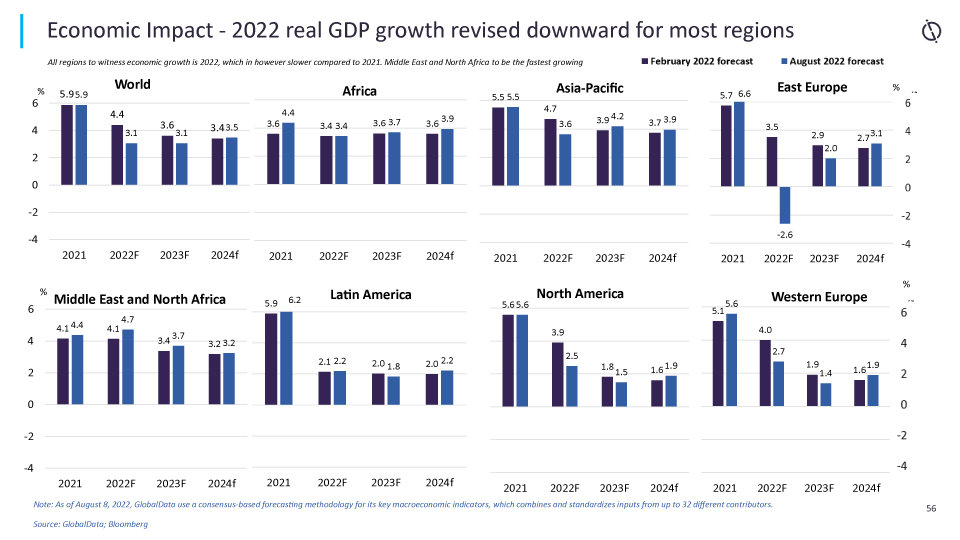Ukraine crisis briefing
Powered by
Download GlobalData’s Ukraine Crisis Executive Briefing report
- ECONOMIC IMPACT -
Latest update: 16 August 2022
There is a real risk of a return to the ‘stagflation’ that characterised the 1970s. The World Bank has lowered its global growth forecast from 4.1% to 2.9%, with a warning that many countries may see recessions.
Against this backdrop, GlobalData now forecasts the world economy will grow at just 3.1% in 2022, following 5.9% growth in 2021. At the same time, the global inflation rate is now projected to rise to 7.5% in 2022 from 3.5% in the previous year, up from 7% in the last report, which was published on 7 July 2022.

6%
Consensus forecast for world GDP growth in 2021
6%
Unemployment rate in OECD nations in August 2021
- SECTOR IMPACT: APPAREL -
Latest update: 16 August 2022
Industry predictions
Sanctions
Supply chain and demand disruption
Commodity price impact
BACK TO TOP